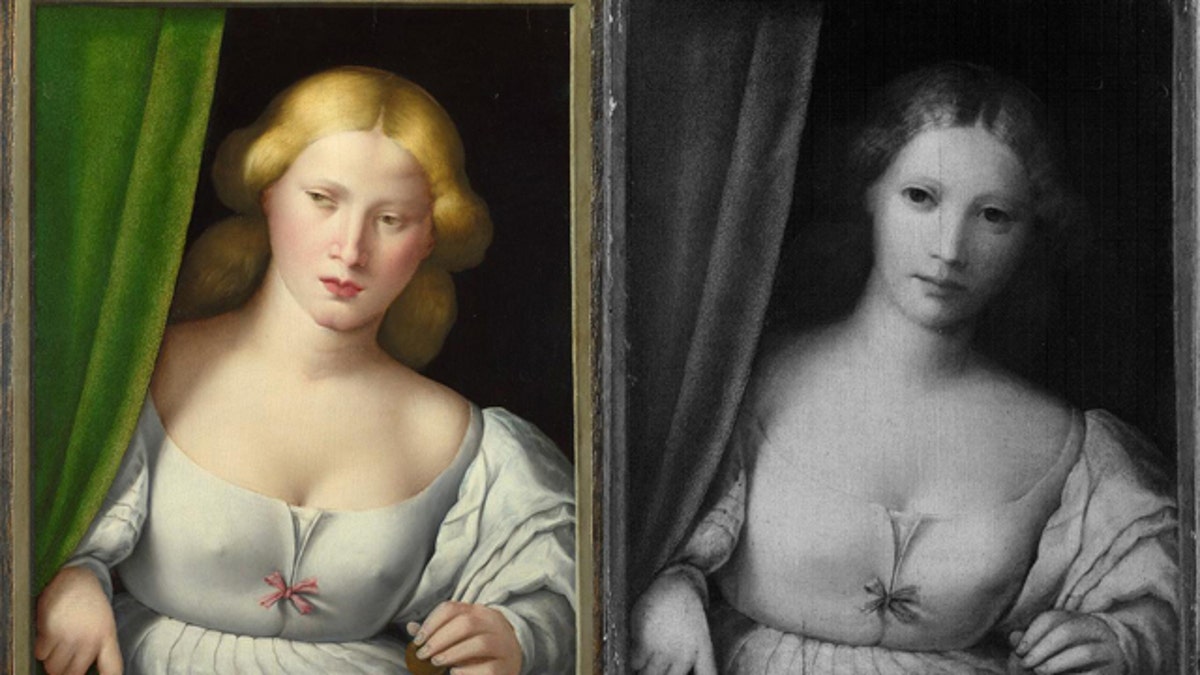
A provocative Renaissance painting from around 1520 was dramatically altered in the 19th century to satisfy more restrained Victorian tastes. The girl’s hair was changed from blond to brunette, her expression made more innocent and her bodice rendered less revealing. Now science has helped uncover the original work. (The National Gallery, London)
The Da Vinci Code was fiction. But in the real world, science has let researchers pull hidden secrets from other famous paintings.
And an exhibit opening this summer at London's National Gallery showcases how scientists have used modern research equipment to shed new light on the history behind those priceless works of art.
Specialists in the Gallery's scientific department study the organic chemistry of old master paintings to understand how they were made and how they have changed over time. Through their work, they have solved disputes over the authorship and authenticity of key works by Raphael, Dürer, Gossaert, Rembrandt and others.
Ashok Roy, Director of Science at the National Gallery describes uncovering something that no one else has seen for perhaps hundreds of years as "both fascinating and exhilarating," but he notes that it is painstaking work.
"Only tiny quantities of material are available for analysis as samples, plus the organic content can be very complex. In addition, these materials have generally changed over time, so that analysis may be of degraded materials the results of which have to be translated into assessments of the original chemical composition when the painting was first produced."
"Gas-chromatography linked to mass-spectrometry" is the core technique for the analyses of these paint samples. In their painstaking investigations, scientists study the characterization and composition of paint-binding media (drying oils such as linseed oil, walnut oil and poppy seed oil), resins, and the composition of old varnishes.
This lets them solve mysteries such as that surround The Virgin and Child with an Angel painting, which was originally attributed to the Renaissance painter-goldsmith Francesco Francia and dated about 1490. The painting's authenticity was queried in 1954 when another version appeared on the market and years of uncertainty ensued. Finally in 2009 a renewed campaign of scientific examination proved beyond a shadow of doubt that the gallery's painting was, indeed, a 19th century fake.
As well as needing a meticulous approach, working on highly valuable paintings is also technically demanding.
All these analyses are challenging in the sense that every picture presents new problems and subtle variations of chemistry," said Roy. And gas-chromatography is "the ideal way of exploring these problems."
The "Close Examination" exhibit presents the varied and fascinating stories behind more than 40 paintings. It's arranged over six rooms, representing some of the major challenges faced by Gallery experts: Deception and Deceit; Transformations and Modifications; Mistakes; Secrets and Conundrums; Redemption and Recovery; and a special focus room relating to Botticelli.
